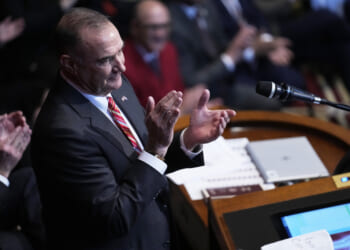Shortly after the passage of the “One Big, Beautiful Bill Act,” or OBBBA, the critics came out to claim all the damage it would do, and no one was more upset about its passage than the clean energy lobby. Thanks to President Donald Trump’s animus toward solar and wind power, which he called “a blight” upon the country, the Biden regime’s preferential treatment toward renewable energy was coming to a screeching halt.
Even before the bill was signed on July 4, CNN was bleating that “your energy prices will change because of the GOP tax bill.” Shortly after passage, that siren call was joined by NPR and CNBC, the latter giving a dollar amount of the increase by state. (CNN expressed it as a percentage.)
NPR had the most cheese with its whine:
Without tax credits, the cost of wind and solar plants will go up. Companies are likely to respond by building fewer of those projects, and those facilities that do come online will have bigger price tags, according to multiple estimates. As that happens, the country is expected to generate more electricity from natural gas plants, which are often more expensive to run than wind and solar projects. That shift will hit hardest in states that don’t have their own policies to drive renewable energy development, says Dan O’Brien, a senior analyst at Energy Innovation. In Oklahoma, for example, homeowners, renters, and businesses are likely to see electricity rates shoot up by between 60% and 350% over the next decade, according to Energy Innovation. The firm expects rates to rise by at least 48% in Kentucky, 39% in Missouri, and 30% in Kansas. The congressional delegations of those states are overwhelmingly Republican.
The study by Energy Innovation also claimed that Americans would lose 760,000 jobs by 2030 and $980 billion in cumulative GDP over the budget reconciliation window.
Yet for all the doom and gloom portrayed by the Energy Innovation study, one key linchpin was left out according to Thomas Catenacci at The Washington Free Beacon: “Those reports did not mention the ‘nonpartisan’ firm’s CEO and cofounder: Sonia Aggarwal, a former Biden climate adviser who helped write those very subsidies into law.”
Seems to me that’s a fairly substantial thumb on the scale there, is it not?
I’ll grant there is a chance that the Energy Innovation numbers work and the study is on the up and up, but other analysts also agree that the assumptions are flawed. Again, the Beacon reports, “Kenny Stein, vice president of policy at the Institute for Energy Research, said Energy Innovation’s One Big Beautiful Bill study makes a number of faulty assumptions: that more wind and solar power production automatically lowers electricity prices, that any spending on new power generation — green or otherwise — is a positive, and that fewer EV sales will lead to higher fuel costs. In other words, Energy Innovation didn’t properly analyze the impacts that greater wind and solar reliance have on consumers, Stein told the Washington Free Beacon. ‘They make the grid harder to operate, they make the grid more unreliable, and they make the grid more expensive,’ he said.”
Grid reliability is the name of the game when it comes to demand.
As I noted last week, one reason Pennsylvania has emerged as a leader in the AI data center sweepstakes is the availability of two reliable sources of power: natural gas and nuclear. Those sources are already factored in as dependable backups when the wind doesn’t blow, the sun doesn’t shine, and the batteries run out.
If energy is more expensive in some states, the cause may be as simple as their compliance with mandates that dictate a certain percentage of power must be generated from renewable sources. Sunshine and wind may be free, but converting them into a useful form of energy — electricity — makes it quite expensive. When all the costs are factored in, “free” energy is some of the most pricey around. On those hazy, still days, many of us across the country face over the summer, the lack of wind and solar resources shouldn’t be allowed to interfere with our need for electricity. Not being able to supply that need because reliable resources aren’t there is a cost that should be accounted for as well.















